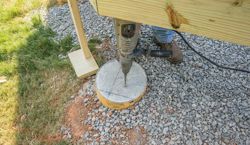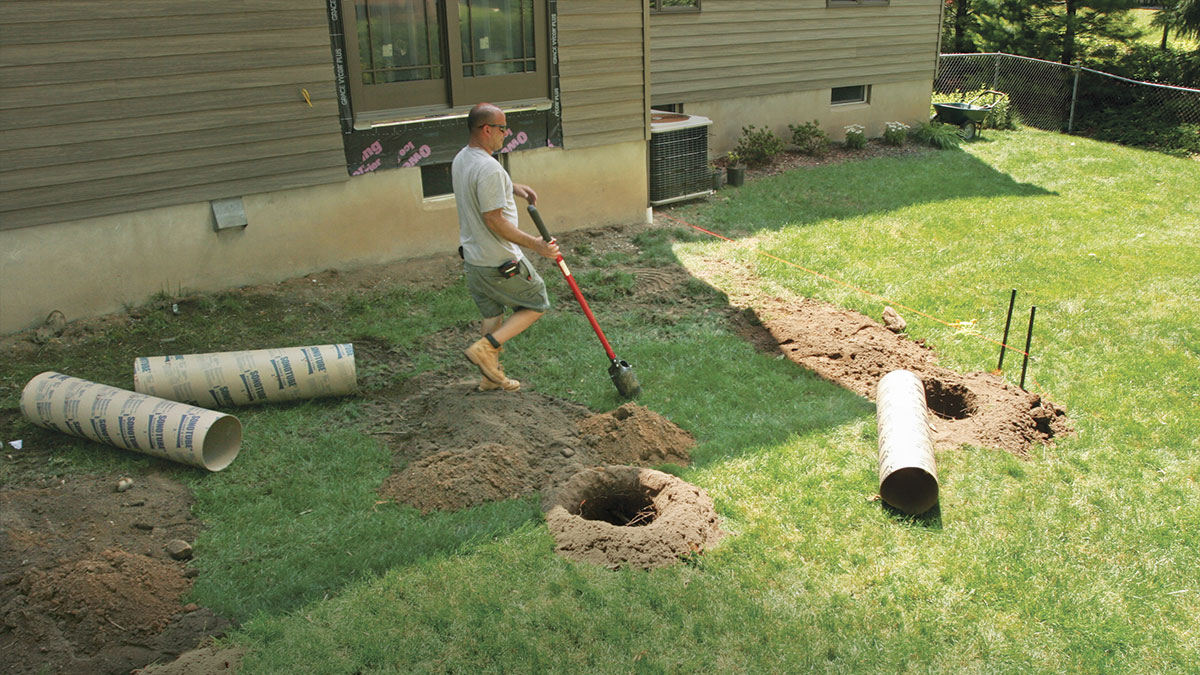Guarantee Stability and Longevity With Properly Set Up Deck Footings
Deck grounds might not be the most extravagant element of deck building and construction, however they play an important role in ensuring stability and long life. In this conversation, we will explore the relevance of correct deck footings, aspects to think about during setup, various kinds of grounds offered, step-by-step installment guide, and upkeep ideas for making sure durable grounds.

Significance of Proper Deck Footings
Why are properly installed deck footings critical for the security and long life of your deck? Deck footings are the foundation on which the deck relaxes, moving the lots from the deck to the ground.
To start with, correctly set up deck footings disperse the weight of the deck uniformly, protecting against any kind of irregular settling or sinking. This is especially important in areas with unpredictable soil, as it aids to mitigate the threat of the deck collapsing or shifting. Additionally, well-installed footings guarantee that the deck stays level, avoiding any structural damage that can happen when a deck ends up being unequal.
Second of all, properly mounted grounds provide a strong support for the deck, protecting against excessive movement and persuade. This helps to preserve the architectural stability of the deck, reducing the risk of injuries or mishaps. It additionally reduces the wear and tear on the deck, enabling it to stand up to the elements and normal use for a longer amount of time.
Factors to Consider for Deck Ground Installation
When installing deck footings, there are several crucial factors to think about for correct installment. These factors can greatly influence the stability and durability of your deck. You require to identify the kind of dirt on which the deck will be developed. Different dirt kinds have different load-bearing abilities, so it is essential to conduct a dirt examination to guarantee the footings can support the weight of the deck and its passengers. Additionally, the location and format of the deck ought to be meticulously intended to avoid any type of obstacles such as trees, energy lines, or below ground pipes. It is also important to take into consideration the neighborhood environment and weather, as these can affect the durability of the grounds. For instance, areas with a high water table may need additional measures to protect against water damages. The dimension and material of the grounds must be selected based on the dimension and weight of the deck, as well as the regional structure codes and regulations. By considering these elements, you can guarantee the proper installment of deck footings and appreciate a stable and long-lasting deck.
Sorts Of Deck Grounds to Select From
There are several different sorts of deck grounds offered for you to choose from. Each kind has its own advantages and negative aspects, so it's vital to consider your certain needs and the conditions of your deck prior to making a choice.
One usual kind of deck ground is the concrete ground. This includes digging holes in the ground and pouring concrete right into them to develop a strong structure. Concrete grounds are long lasting and offer outstanding stability, making them suitable for decks in locations with tough soil conditions or high wind loads.
One more option is the helical pier ground, which includes a steel shaft with helical plates that are screwed into the ground. These grounds fast to set up and can be used in various dirt types, consisting of sandy or clay dirts. They are also flexible, enabling for simple leveling of the deck.
Sonotube grounds are one more popular selection. These grounds are created by positioning a cardboard tube in an opening and filling it with concrete. Sonotube grounds are fairly easy to set up and provide adequate security for smaller decks or in areas with much less demanding dirt conditions.

When choosing the type of deck footing, it's important to think about variables such as soil conditions, deck size and weight, regional building regulations, and personal choices. By choosing the appropriate ground type, you can ensure the stability and longevity of your deck.
Step-by-Step Overview for Putting Up Deck Footings

Establish the location: Start by noting the exact placement of each ground utilizing risks and string (Deck Footings). Think about any type of local building codes or laws concerning obstacle ranges
Dig the holes: Utilize a blog post hole digger or an auger to dig the holes for the grounds. The depth will depend upon the frost line in your location and the kind of soil. Normally, a deepness of at least 36 inches is suggested for security.
Degree the holes: Guarantee that the bases of the openings are degree (Deck Footings). This can be achieved by using a degree or a straight board throughout the top of the openings
Include crushed rock: Place a layer of gravel at the bottom of each hole to enhance drain and prevent the ground from sinking right into the dirt gradually.
Put the ground kinds: Put the ground creates right into the openings, guaranteeing they are focused and level. Use risks to secure them in position.
Mix and pour concrete: Follow the instructions on the concrete mix bag to prepare the concrete. Put the concrete right into the ground kinds, loading them totally.
Smooth the surface area: Make use of a trowel to smooth the surface area of the concrete and get rid of any kind of air pockets. Permit the concrete to treat according to the maker's directions.
Maintenance Tips for Resilient Deck Footings
Appropriate upkeep is essential for making sure the long life and stability of see this website deck footings. By frequently evaluating and keeping your deck footings, you can prevent damages and possible safety risks.
Regular cleansing is also vital for preserving deck footings. Debris, dust, and plants can gather around the grounds, which can result in moisture buildup navigate to this website and decay. Cleaning up the footings on a regular basis, using a pressure or a brush washing machine, can aid prevent these concerns and expand the life-span of your deck.
In addition to cleansing, it is essential to maintain the area around the footings clear of any obstructions. Stay clear of piling items against the footings or enabling plants to expand too near them. These obstructions can catch wetness and trigger the grounds to wear away in time.
Last but not least, regular resealing of the footings is recommended to secure them from dampness and other environmental elements. Applying a water-proof sealer can assist avoid water damages and prolong the life expectancy of the footings.
Conclusion
Finally, correct installation of deck footings is vital for making certain stability and long life of your deck. Factors such as soil kind, load capacity, and neighborhood building ordinance require to be considered when choosing the right sort of deck grounds. Adhering to a detailed overview for setup and routine maintenance will certainly aid to make certain the grounds stay durable and sturdy.
In this conversation, we will explore the relevance of appropriate deck footings, factors to take into consideration throughout setup, different kinds of footings available, detailed setup guide, and upkeep ideas for guaranteeing resilient footings. Deck grounds are the structure on which the deck rests, moving the load from the deck to the ground.One usual type of deck footing is the concrete footing. Put read the article the footing kinds: Insert the ground forms right into the holes, guaranteeing they are centered and degree.In conclusion, correct setup of deck grounds is vital for making certain stability and long life of your deck.